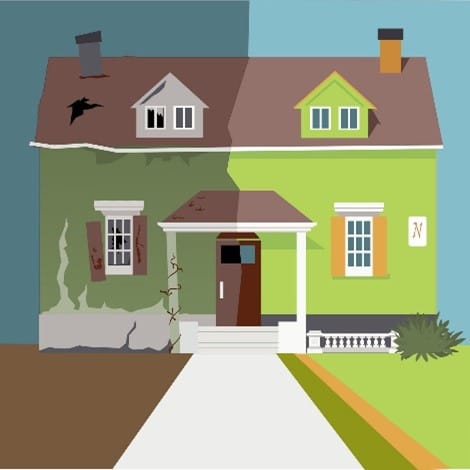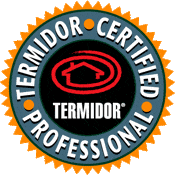What is a WDO Inspection and how does it benefit you?
Many people commonly refer to the WDO Inspection as a “Termite Inspection”, but it is much more. The inspector conducts a visual inspection of the structure for evidence of termites, beetles, wood-decaying fungi and conducive conditions which could attract/support a wood destroying organism. The Inspector will issue the required FDACS Form 13645, Wood Destroying Organisms Inspection Report.
WDO Inspections are regulated by FDACS and WDO Inspectors must be licensed by the state. They must have a license which begins with the letters “JE”. A home inspector or building contractor is not licensed to perform WDO inspections. The inspection is independent of any other inspections or agreements.
A WDO Inspection will reduce your risk in purchasing a property which may be infested with a wood destroying organism, but it will not completely eliminate all risk. If you are purchasing a home or commercial building you should always require the Seller to disclose previous termite damage and copies of treatment certificates or current guarantees.
Often, home or commercial property buyers are lulled into a false sense of security when they are told the property has an “assumable termite bond” and they forgo the WDO Inspection. Pest control companies do not issue “bonds”; they issue trade guarantees with defining terms and conditions. Most termite guarantees cover the Eastern subterranean termite only so if the home is infested with Formosan, Cuban, Asian or hybrid subterranean termites, drywood termites, powderpost beetles or wood-decaying fungi, there would be no coverage for treatment or damage should you find these organisms after closing. Further, some guarantees provide limited coverage such as “retreatment only” and therefore would not cover “damage”.
The WDO Inspection should be an important part of your pre-purchase, due diligence if you are buying real estate. Sellers are legally bound to disclose repairs or knowledge of termite damage. Structural repairs to foundations or framing require building permits (which is why we check building permits online before we inspect the property!). You should know, few WDO inspectors provide this level of extra care but it is especially important as we find permits for termite repairs which the Seller did not disclose (in some cases the Seller did not know it).
3 levels of WDO Inspections
BASIC Inspection
Included: ()
- Compliant State Inspection
- Online Permit Search
- 13645 Report Form
- Visual Inspection
- Thermal Imaging
- Moisture Sensing
- Radar to Locate Activity
- Guarantee
Level 2 Inspection
Included: ()
- Compliant State Inspection
- Online Permit Search
- 13645 Report Form
- Visual Inspection
- Thermal Imaging
- Moisture Sensing
- Radar to Locate Activity
- Guarantee
TermaTrac Inspection
Included: ()
- Compliant State Inspection
- Online Permit Search
- 13645 Report Form
- Visual Inspection
- Thermal Imaging
- Moisture Sensing
- Radar to Locate Activity
- Guarantee
All inspections are limited to areas which are accessible, safe and visible pursuant to state guidelines
Basic Inspection
Our Basic inspection is a visual only, state compliant, inspection. We do not offer any guarantee beyond what is clearly visible and accessible pursuant to state standards for a WDO inspection. A Basic inspection entitles you to a $50 discount on one of our termite protection plans.
Level 2 Inspection
Our Level 2 inspection includes scanning of walls with a thermal camera to aid in locating potential nests and termite trails which may not be visible on the face of the drywall. Our Level II includes a Retreatment Only guarantee for subterranean termites. If subterranean termites are found within 90 days of our inspection, 360PestControl will treat the area at no charge. A Level 2 inspection entitles you to a $100 discount on one of our termite protection plans.
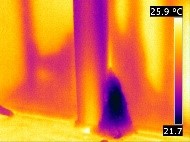
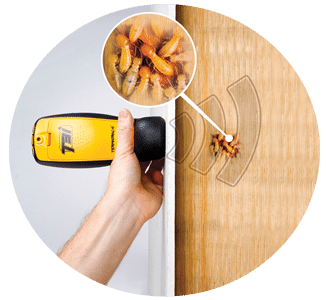
Termatrac Inspection
Our TermaTrac inspection includes scanning the walls/ceilings with the patented TermaTrac® which uses radar, moisture and thermal sensing to locate foraging termites behind walls. It is the most thorough and complete WDO inspection available. Our TermaTrac Inspection includes a Retreatment Only guarantee for subterranean termites. If subterranean termites are found within 120 days of our inspection, 360PestControl will treat the area at no charge. A TermaTrac inspection entitles you to a $150 discount on one of our termite protection plans.
Sellers are legally bound to disclose repairs or knowledge of termite damage. Structural repairs to foundations or framing require building permits (which is why we check building permits online before we inspect the property!). You should know, few WDO inspectors provide this level of extra care but it is especially important as we find permits for termite repairs which the Seller did not disclose (in some cases the Seller did not know it).
When You Need Our WDO Services
If minor WDO is holding up the sale/purchase of your property, as a fully licensed, pest control company, we can also provide treatment for infestations of wood destroying insects and and wood-decaying fungi and provide a guarantee so you can close with confidence.
If you are selling a property when others have called out Evidence or Damage caused by termites, call us for a second opinion or spot treatment. Our TermaTrac® can determine if live termites are present vs. old damage or pinpoint the location for spot treatment. Often, no treatment is needed! We save our customers thousands of dollars in unnecessary treatment.
Do not fumigate without talking to us.
You may not need to “tent your home”!
Frequently Asked Questions
An arthropod or fungus that damages and can “reinfest” seasoned wood in a structure, namely termites, powderpost beetles, old house borers and wood-decay fungi”. Clearly, by definition, a WDO must be an organism which not only damages seasoned wood but also must be able to reinfest. Wood delamination due to exposure would not meet that definition.
The Form 13645 describes what the Consumer should expect in Section 2. The inspection has limitations. Standard limitations restrict the inspection to what was visible and clearly accessible, and it does not constitute a guarantee of the absence of WDOs or damage or other evidence unless specifically included. The inspection is generally limited to a height of ten feet.
First, there is no legal “termite bond” as pest control companies issue Guarantees and not “bonds”. The guarantee is backed by the goodwill of the Company and its insurer. Bonds are issued by a surety company. You are getting a “trade guarantee” which is a promise to correct an issue within the terms of the contract.
There are many variations of termite guarantees yet many do not understand the difference. Some guarantees may be for Retreatment Only, and some may include Repair and Retreatment of structurally damaged wood. Some may not include any guarantee at all. Most guarantees cover damage from Eastern Subterranean termites only and you may not be protected from other subterranean termites such as Formosan, Cuban, Asian or a hybrid specie. Some may include coverage for drywood termites, but most do not. Few contracts include damage or treatment for wood decaying fungi. If you are considering assumption of the existing termite guarantee you should obtain a copy of the contract and review it, so you understand what is being offered.
Unfortunately, many termite guarantees are based on old, outdated treatments which are no longer effective. Studies conducted by the University of Florida and others show most chemical treatments have a life expectancy of less than five years, even if applied correctly. Depending upon the type of soil, some chemicals lose over 50% of their efficacy in months. Far too many termite companies offer annual renewals based on old, outdated treatments. They know most people are never pleased to hear their $1,000 termite treatment needs updating in 3-5 years and they don’t want you to shop their service. They are gambling using your home as collateral.
You are under no obligation to continue with the current service company or to assume the termite guarantee. Conversely, even though many people sell their home “with a termite bond”, the termite company is not legally bound to continue the guarantee, and most will require a new inspection or a contract extension to continue the coverage. Where do you think you stand if you are the new owner and the termite company finds termites when they inspect after you close? They are no longer liable to the original contract holder as they no longer own the home…nor have they contracted with you!
The State of Florida does not recognize the NPMA-33 form which many mortgage lenders request as this form does not include wood-decaying organisms in the inspection requirement. The VA, FHA and HUD all accept the FDACS 13645 form in lieu of the NPMA-33 form. When your mortgage broker demands the NPMA 33 form they are either misinformed or they are trying to ignore the “organism” part of the State of Florida 13645 form. This is not in your best interest. Advise your mortgage broker to get clarification from their supervisor as this has been addressed and cleared many years ago.
Inspectors must abide by the guidelines provided by FDACS and “water damaged” wood is not a wood destroying organism; it may be a conducive condition for an organism but in the absence of brown rot, white rot, soft rot or poria, it is not a WDO. Water damaged wood is generally required to be repaired/replaced in a VA home loan if reported by the VA appraiser so if the loan is conditional upon VA loan approval, the Seller would be required to fix it under those conditions. In that case, the realtor should not need water damaged wood listed on the WDO report form.
It depends upon what is found. Minor damage is common on older homes, especially homes on crawlspaces. We are always happy to discuss our findings with you to determine the best course of action.
Simply, it means the Inspector found Evidence and Damage caused by wood destroying insects (termites, powderpost beetles, old house borers or fungi but the Inspector did not observe Live insects or was unable to determine if the fungi was active. Many inspectors are simply unable or not equipped to make these determinations, but we are.
WDO Inspectors are supposed to identify the type of wood-decaying fungi found in the report but many do not. Wood-decaying fungi, under FDACS guidelines, is brown cubicle rot, white rot, soft rot or poria incrassate. There is treatment for these fungi which generally consists of a topical borate chemical treatment. Minor evidence of one of these fungi may not require treatment so you need an experienced WDO Inspector who can advise of the severity present.
In Section 2 of the 13645 report, FDACS requires the inspector to note the following:
- No visible signs of WDO (live, evidence or damage) or,
- VISIBLE evidence of WDO:
- LIVE WDO (termites, Old House Borer, Powderpost beetles or Wood Decaying Fungi.
- EVIDENCE of WDO (dead insects or insect parts, frass, shelter tubes, exit holes or other evidence).
- DAMAGE caused by WDO (physical damage to wood such as termite galleries, exit holes, or wood-decaying fungi such as brown rot, soft rot or white wood rot).
Many inspectors fail to advise what these categories mean to you. Let’s consider the following:
- Live WDOs should be treated. Few inspectors will find live Powderpost Beetles or Old House Borers as the larvae is hidden within the wood (it is rare to see the beetle). Generally, inspectors find live termites or active fungi. Live WDO means there is an active infestation and treatment is needed.
- Evidence of WDO means the inspector found evidence but no live or active organisms. Typical evidence would be finding termite wings on a windowsill or termite galleries or shelter tubes with no live termites present. This does not mean the structure needs treatment; it may have been treated in the past. If there is no active termite protection in place, treatment should be recommended.
- Damage caused by WDO is noted when there is damage to building components, i.e., termite galleries in the framing or wood trim, shrinkage in floor joists from brown cubicle wood rot or bubbled paint for example. Repair or treatment may be needed depending upon the level of damage.
Unfortunately, most WDO inspectors have minimal training and they do not understand what insect/fungi is present or if it needs treatment! Finding evidence or damage from certain listed wood destroying organisms does not mean you need treatment:
- Lyctus or True Powderpost beetles (round, 1/32 – 1/8 inch exit holes) rarely reinfests wood over 10 years old
- Bostrichid, or False Powderpost beetles (round, 1/16 – 5/16 inch exit holes) do not reinfest.
- Cerambycid or Old House Borer beetle exit holes (oval, 1/4 – 3/8 inch exit holes) rarely reinfest wood over 10 years old.
- Wood rot (fungi) on wood with less than 30% moisture content may not need treatment. Finding a spot or two of white wood rot in a crawlspace on an aged home is not unusual; finding it on the roof sheathing without moisture typically means there was a roof leak at some point. You can treat the spots or just monitor them to make sure additional growth is not occurring. Wood decaying fungi needs moisture to grow.
Finding evidence/damage of beetle exit holes without frass most likely indicates, at some point in time, the wood was infested. It may have been in the tree when it was harvested or the wood was infested after construction; without finding frass to compliment the evidence of exit holes, there is no reason to recommend treatment. You should monitor the area for a couple of years by having it inspected annually for the presence of frass.
Powderpost beetle evidence and damage. Note the presence of frass in the galleries (fine sticky powder)

If the WDO inspector fails to identify the specific type or specie of termite, beetle or fungi present, you should demand a full explanation and find an inspector who can. You are only getting half the information you need.
Blue staining fungi differ from surface fungi in that their hyphae grow into the outer layers of sapwood. They do not destroy or decay the structural integrity of the wood. Blue staining is generally related to Ambrosia beetles which infested the tree before it was milled. No treatment is needed for blue stain fungi.
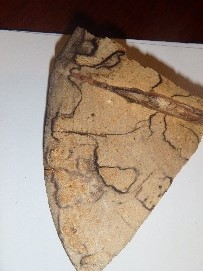
Serpula lacrymans or cubical brown rot is a wood-decaying fungi which causes the wood to break into small cubes with cracks running perpendicular to the grain. This is caused when the wood changes in moisture content from wet to dry; as the wood dries it becomes brittle and shrinks. The wood becomes brown and crumbly and it loses structural strength. Eventually all the cellulose is decomposed, and lignin is left behind giving it a dark-brown appearance. In time, the wood will turn to a powder.
Brown cubical wood rot is often found in crawlspaces with poor drainage and/or those which flood periodically.

Phanerochaete chrysosporium or White Wood Rot is a wood-decaying fungi which attacks both cellulose and lignin. Destruction of the lignin causes a whiteish, bleached, stringy appearance in the wood. The wood texture is spongy with little strength.Phanerochaete chrysosporium or White Wood Rot is a wood-decaying fungi which attacks both cellulose and lignin. Destruction of the lignin causes a whiteish, bleached, stringy appearance in the wood. The wood texture is spongy with little strength.
White wood rot is common in crawlspaces that are consistently wet. Shrinkage of the wood is not common. Also commonly found in wood or sheathing around plumbing or roof leaks.
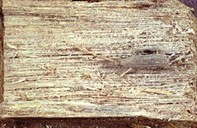
Chaetomium spp. or Ceratocystis spp. is a wood-decaying fungi which attacks the wood from the surface inward and it causes cavities to form. This fungi requires very wet conditions such as the wood being in contact with water or constant leakage. Typically found in cooling towers, marine habitats and wood in contact with wet soils such as wood decks.
Soft wood rot is common in marine habitats and wood decks.
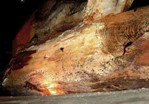
Meruliporia incrassate or Poria is a type of brown rot fungi and is often referred to as “dry rot”. This fungus has specialized structures called rhizomorphs that conduct water from wet soil to the wood so the wood itself, does not have to be exposed to moisture. The rhizomorphs or hyphae can extend up to 25 feet away from the soil. This fungi can completely destroy wood in as little as 1-2 years. There is no chemical cure for poria. The soil will need to be removed and the drainage corrected to remove the water.
Poria is found in wood in contact with poorly drained soils and swamps.
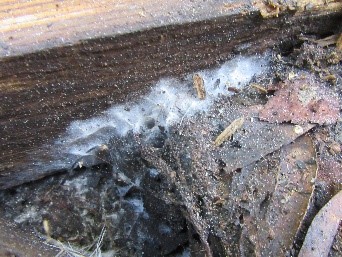
If the termites are scattered across many areas of the home, fumigation is probably the best choice for treatment. However, if active drywood termites are localized, spot treatment may be an inexpensive option. The key is a thorough inspection to document specific areas of infestation.
Drywood termites are not as damaging as subterranean termites. The colonies are smaller, and they consume less wood. They can cause extensive damage over many years but if detected in the early years, there is rarely any need to perform structural repair.
Drywood termites feed on dry, structural wood. They are commonly found in rafters, ceiling joists, floor joists, cabinets and wood flooring.


